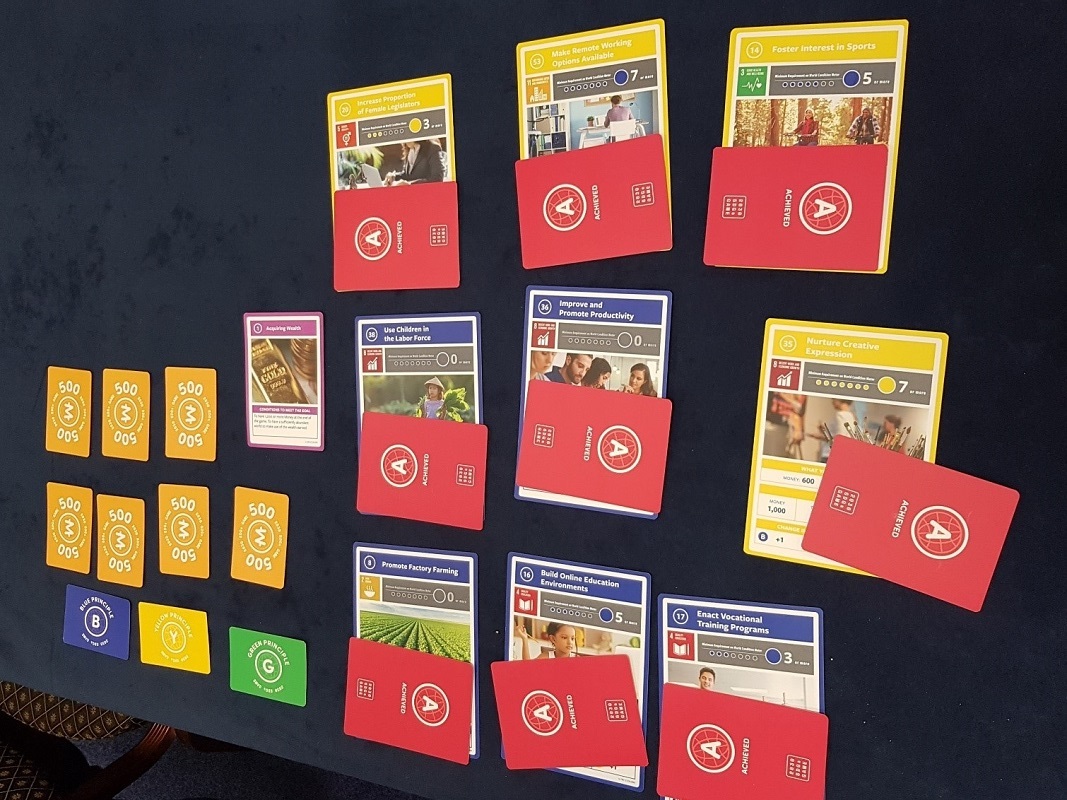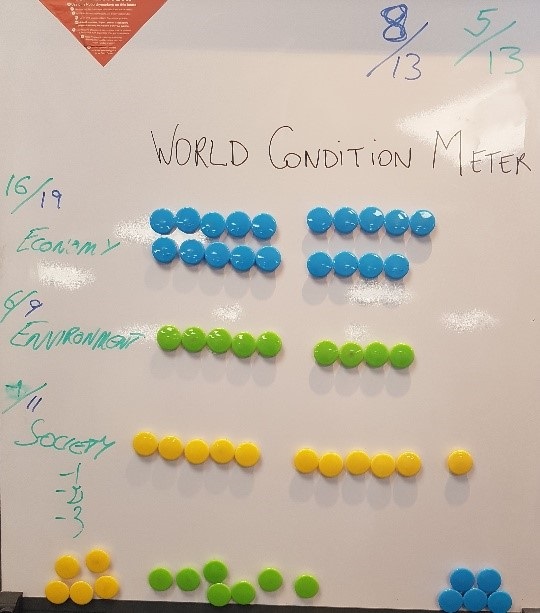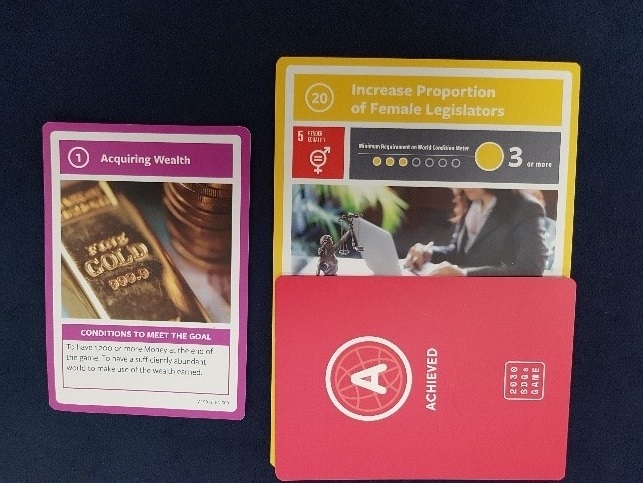How gamification can help achieve the UN's SDGs

|
| Elodie Huiban, ICE Knowledge Strategy Manager, writes about an innovative game that demonstrates how enhanced collaboration can increase the impact of sustainability strategies. |
Contents |
[edit] Outline
Embedding the sustainable development goals into your operations and installing an effective collaborative process are two complicated concepts that require a systematic approach.
To make sense of this complexity, a set of innovative minds from Japan have combined the 17 UN SDGs and the three pillars of sustainability - environment, social and economical principles – into a highly collaborative environment to create the 2030 SDG Game.
[edit] An SDG Game
[edit] How it works
The 2030 SDG Game is an innovative and unique approach to real-world issues. During the game, participants work in groups to explore how the world can achieve the UN's sustainability goals by 2030 - or fail to do so.
Through a set of project cards, players work to achieve their personal life goals while keeping awareness of the world they live in. By allocating money and time to achieve their goal, which may be to enjoy leisure, improve their wealth or achieve social justice, they must also balance development so that economic growth will promote life on land, create sustainable cities and communities, boost health, well-being, gender equality and the optimal development of critical national infrastructure.
If most players in the game have created a world focused on generating wealth without thinking about the impact their projects will have on the environment and society, then this will show on the 'world condition meter' shown below.

|
| The world condition meter |
Therefore, players who seek social justice, for instance, will struggle to achieve their goal on their own.

|
| As shown above, to deliver a social project, i.e increasing the proportion of female legislators, world conditions need to be equally sustained from economical, environmental and social perspectives. |
This is captured on the world condition meter board in real time throughout the game.
At the end of the first part of the game, the social/society meter was at -1.
During the break, Paul Mansell, PhD researcher into SDGs and facilitator of the game, asked the participants to reflect on the subtle, yet key, part of everyone’s goal, which was to be able to evolve in a balanced, safe and healthy world environment.
Participants experienced a dramatic change in perspective and the second part of the game began. The energy in the room was palpable, the heat went up rapidly, everyone energised to deliver a better world. It felt good to help others achieve their social goals, while others managed to trilaterally achieve an environmental project.
The most powerful impact of this game is the attitude-change players experience, from a siloed mentality to a collaborative approach, in order to achieve not only their own objective, but also an optimal world condition.
[edit] The impact
Firstly, many realised that one’s own objective was not as important as creating better world conditions for all, and that if society was more aware of the impact it has on everyone else, as well as each other, we could achieve much greater outcomes.
Second, through collaboration and community engagement, we could have the power to accomplish sustainable world conditions, from achieving personal goals and delivering impactful projects to a well-balanced and environmentally-friendly world, benefiting from a striving economy.
The most fulfilling aspect (as organiser) was seeing the participants feel excited, having enjoyed collaborating with others and realising the impact projects have on the sustainability of the planet. It was a truly inspirational and an eye-opening moment.
[edit] Actions
Gamification is a compelling way to educate audiences on a specific topic, and through competition and collaboration, the game will enable them to take actions which will motivate them.
It was suggested that a roadshow of gaming sessions could be developed within all ICE regions aimed at educating ICE members, staff and the wider industry, and, to above all, enhance collaboration.
Readers are kindly asked to share their thoughts and collaboration successes on the sustainability route map.
[edit] About this article
This article was written by ice.org.uk Elodie Huiban, ICE Knowledge Strategy Manager and was previously published on the ICE website. It can be accessed here.
[edit] Related articles on Designing Buildings Wiki
Featured articles and news
One of the most impressive Victorian architects. Book review.
RTPI leader to become new CIOB Chief Executive Officer
Dr Victoria Hills MRTPI, FICE to take over after Caroline Gumble’s departure.
Social and affordable housing, a long term plan for delivery
The “Delivering a Decade of Renewal for Social and Affordable Housing” strategy sets out future path.
A change to adoptive architecture
Effects of global weather warming on architectural detailing, material choice and human interaction.
The proposed publicly owned and backed subsidiary of Homes England, to facilitate new homes.
How big is the problem and what can we do to mitigate the effects?
Overheating guidance and tools for building designers
A number of cool guides to help with the heat.
The UK's Modern Industrial Strategy: A 10 year plan
Previous consultation criticism, current key elements and general support with some persisting reservations.
Building Safety Regulator reforms
New roles, new staff and a new fast track service pave the way for a single construction regulator.
Architectural Technologist CPDs and Communications
CIAT CPD… and how you can do it!
Cooling centres and cool spaces
Managing extreme heat in cities by directing the public to places for heat stress relief and water sources.
Winter gardens: A brief history and warm variations
Extending the season with glass in different forms and terms.
Restoring Great Yarmouth's Winter Gardens
Transforming one of the least sustainable constructions imaginable.
Construction Skills Mission Board launch sector drive
Newly formed government and industry collaboration set strategy for recruiting an additional 100,000 construction workers a year.
New Architects Code comes into effect in September 2025
ARB Architects Code of Conduct and Practice available with ongoing consultation regarding guidance.
Welsh Skills Body (Medr) launches ambitious plan
The new skills body brings together funding and regulation of tertiary education and research for the devolved nation.
Paul Gandy FCIOB announced as next CIOB President
Former Tilbury Douglas CEO takes helm.























